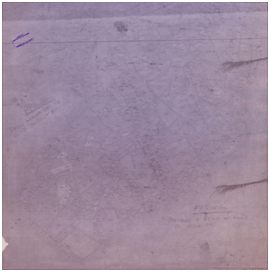Automatic Geometric Registration of Legacy Maps

| Year: | 2017 |
| Is Finished: | yes |
New processes exist today that are used to geometrically improve and enhance analogue legacy maps by matching them to more accurate and reliable reference datasets. The majority of these processes include certain manual or semi-automatic stages, such as referencing them to a certain coordinate-system or identifying and extracting mutual unique corresponding features required to geometrically registering them.
The objective of this research is to develop a new approach toward achieving an automatic registration of the legacy map to a reference dataset, i.e., geo-referencing the legacy map. Such a qualitative stage is required for achieving a more robust and accurate solution in subsequent stages, namely matching and enhancement of the legacy map.
The registration is carried out by applying mutual point-based (features) registration methodology for extracting a preliminary rough rigid spatial transformation that align best the source dataset, i.e., the pixel-space legacy map, with the ‘real-world’ reference one. The registration process searches for the best fit of the two datasets, where a spatial transformation enables the source dataset to be aligned with the reference (target) dataset. The correspondence between the features enables the calculation of the geometric transformation, and thus establishes feature-to-feature correspondence between the source and target datasets.
The mutual registration methodology is based on a ranking process of the generalized Hausdorff measure that aims at solving the pixel-to-object correspondence. It consists of an iterative process that encapsulates qualitative and statistical measures to evaluate the correspondence of two datasets in metric space by assigning selected distance measure to subsets existing in the datasets. This "distance" is utilized to approximate the degree of similarity - or minimum mismatch - between corresponding features, and it consists of translation, rotation, and scale. The correspondence validation introduces a relative error measure that is based on the Euclidean distance between the excepted point position (target) and the calculated one (transformed source). Together with a minimum number of corresponding points, both are used as a voting validation that the process converged to its global minimum. This process aims at solving two major problems: the existence of outliers in the data, and, the existence of local distortions in the source data.
This methodology replaces the need for preliminary manual error-prone geo-referencing, thus extracting a reliable approximation of the resemblance of two datasets and avoiding ambiguity that might be introduced in the manual process. By implementing this approach the data exists in the legacy map can later be used with higher positional certainty as a geospatial data infrastructure required for supporting governance as well as private sectors legislation processes.
Preliminary statistical analysis proved its feasibility and superiority to the commonly used manual approach. Further improvement is required to decrease the significance of the initial approximate values, and also to make the approach more tolerable to data-errors. This approach is a step toward the establishment of an automatic computational basis required for the enhancement of analogue data, as it presents a step towards the integration of this data type enabling it to be used as a more precise and reliable infrastructure.
